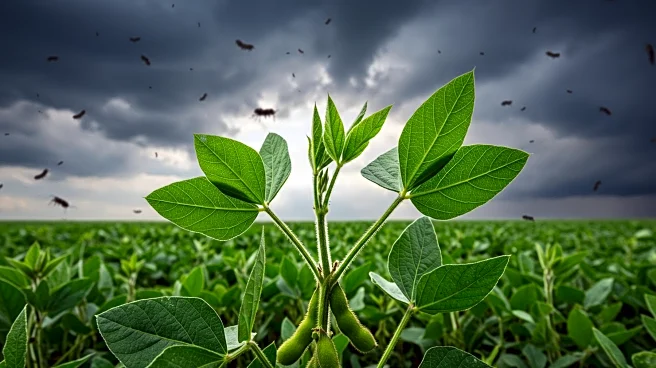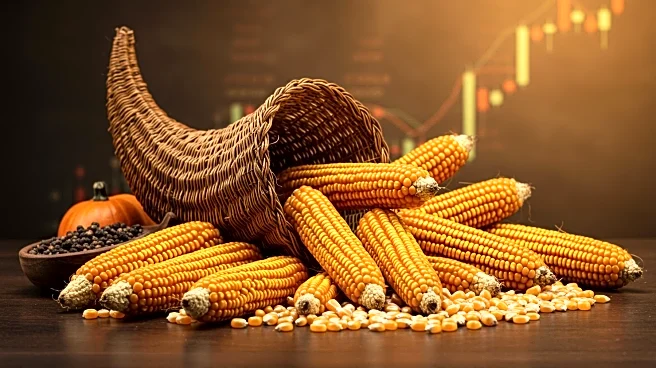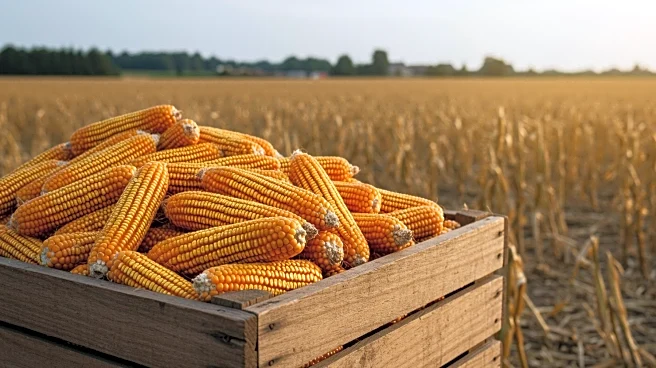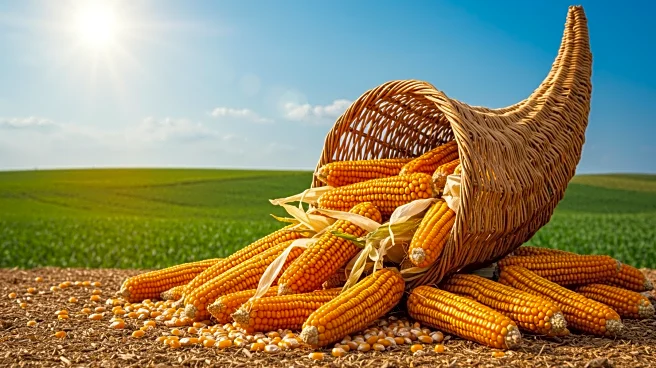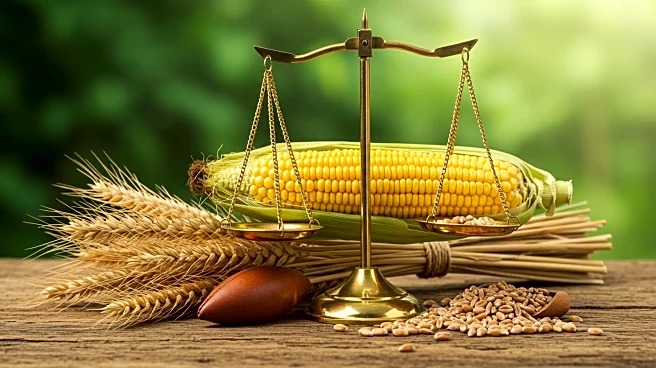What is the story about?
What's Happening?
Mississippi's soybean crop is experiencing varied growth stages due to weather conditions and pest issues. The USDA estimates 2.05 million acres of soybeans, with 59% in good or excellent condition. Heavy rains delayed planting, resulting in a short-statured crop with underdeveloped root systems. Drought stress and nutrient deficiencies are emerging as the state dries out. Insect challenges, including podworms and soybean loopers, are affecting later-planted acres. Regular scouting and targeted insecticide applications are crucial to managing pest populations. Despite these challenges, the November futures contract for soybeans averaged $10.18 per bushel, reflecting a decline due to weak export demand.
Why It's Important?
The condition of Mississippi's soybean crop is critical for the state's agricultural economy and the broader U.S. soybean market. Weather-related planting delays and pest issues could impact yield and quality, affecting market prices and export potential. The reliance on irrigation and pest management strategies highlights the importance of adaptive agricultural practices in response to climate variability. The economic implications extend to farmers, traders, and consumers, with potential shifts in supply chain dynamics and pricing strategies.
What's Next?
As the season progresses, continued monitoring and management of pest populations will be essential to protect the crop. The state's agricultural stakeholders may need to implement more aggressive irrigation strategies to mitigate drought stress. Future weather patterns will play a significant role in determining the final yield and quality of the soybean crop. Economic analysts will likely monitor market trends closely, considering the impact of domestic and international demand on prices.
Beyond the Headlines
The challenges faced by Mississippi's soybean crop underscore broader issues in agriculture, such as climate resilience and sustainable pest management. These factors may drive innovation in crop management practices and influence policy decisions related to agricultural sustainability. The situation also highlights the interconnectedness of local agricultural conditions with global market dynamics.
AI Generated Content
Do you find this article useful?
